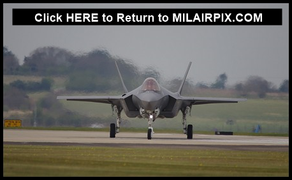|
Roger Whitcomb
|
P-8A POSEIDON FOUND NOT EFFECTIVE FOR MISSION
A new Boeing Co surveillance aircraft deployed to Japan last month isn’t yet effective at hunting submarines or performing reconnaissance over large areas -- two of its main missions, the Pentagon’s weapons tester found.
Flaws in the $35 billion program included the plane’s radar performance, sensor integration and data transfer, Michael Gilmore, chief of the Pentagon testing office, wrote in his annual report on major weapons, which has yet to be released. He said the new P-8A Poseidon exhibited “all of the major deficiencies” identified in earlier exercises when subjected to more stressful realistic combat testing from September 2012 to March 2013.
“Many of these deficiencies” led Gilmore to determine that the P-8A “is not effective for the intelligence, surveillance and reconnaissance mission and is not effective for wide area anti-submarine search,” he said in a section of the report obtained by Bloomberg News. The Navy plans to conduct additional testing “to verify the correction of some deficiencies,” he wrote.
Gilmore’s conclusions suggest the initial aircraft in the program -- which packs a modified Boeing 737-800 with radar and sensors -- aren’t ready for deployment. Among its primary missions is tracking Chinese submarines. Six of the planes have been deployed to Japan supporting 7th Fleet maritime patrol operations at Naval Air Facility Atsugi as part of the U.S. strategic pivot to the Asia-Pacific region.
Vice Admiral Robert Thomas, commander of the 7th Fleet, said in a Jan. 10 press release that the aircraft “represents a significant improvement” over the older P-3 Orion from Lockheed Martin, “providing the opportunity to detect, track and report on more targets than ever before.”
Chicago-based Boeing last month delivered the 13th of what’s to be a 113-aircraft program. The Navy in November declared the aircraft ready for combat deployment after determining the criteria for performing effective patrols “were fully met,” Lieutenant Caroline Hutcheson, a Navy spokeswoman, said in a telephone interview.
“The P-8A was ready, was needed in theater and continues to more than meet fleet commanders’ expectations,” she said. Hutcheson said Gilmore’s office has “consistently highlighted both effective warfare areas as well as recommendations for areas to re-visit.”
“Most issues cited have been collectively identified,” and the Navy has developed “software upgrades to correct deficiencies,” she said.
Boeing spokesman Charles Ramey said in an e-mailed statement that he hadn’t seen Gilmore’s report and was unable to comment directly.
“Feedback we’ve received to date is that the Navy is very happy with the P-8A’s performance,” he said. “As always, Boeing will work hand in hand with the Navy to support any issues that come up.”
Defense Secretary Chuck Hagel, during a trip to Japan in October, lauded the P-8A’s “cutting-edge technologies.”
Gilmore spokeswoman Jennifer Elzea said the test office concluded the aircraft was effective in providing small-area searches similar to the P-3C Orion it’s replacing.
The aircraft also is effective in conducting “unarmed anti-surface warfare missions,” and its radar and supporting sensors “provide an effective, all-weather surface target search,” she said in an e-mailed statement.
Gilmore’s office also concluded the airframe is reliable, offering “significant improvements in hardware reliability, maintainability and availability” over the P-3C, she said. Overall, the Boeing system “provides increased range, payload and speed,” she said.
Gilmore’s report said the recent realistic combat testing confirmed earlier results on flaws in the P-8’s radar “and revealed the operational implications of the radar’s limitations for some targets.” It said details are classified. Raytheon Co. makes the ocean and land-surveillance radar.
Deficiencies with on-board electronics to detect enemy anti-aircraft radar “limited threat detection” while “seriously degrading capabilities and aircraft survivability across all major missions,” the report found. Northrop Grumman Corp makes the “Electronic Support Measures” equipment.
Elzea said the Navy is conducting additional testing “to evaluate several system technical improvements” that will be assessed by Gilmore’s office “as they are delivered.”
The Navy has plans for fielding two sets of aircraft upgrades to “improve anti-submarine warfare capability over several years” and has developed “an adequate test and evaluation master plan” to evaluate improvements, she said.
|

 Home
Home

 Help
Help

 Search
Search

 Login
Login

 Register
Register

 Pages: 1
Pages: 1
 Pages: 1
Pages: 1

 Home
Home

 Help
Help

 Search
Search

 Login
Login

 Register
Register

 Pages: 1
Pages: 1
 Pages: 1
Pages: 1